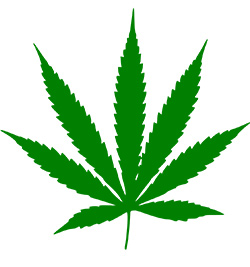 Has the war on drugs been a failure?
Has the war on drugs been a failure?
“War is a bad term because you expect a winner and loser and an end,” said Chelsey Clarke, strategic intelligence unit supervisor for the Rocky Mountain High-Intensity Drug Trafficking Area. “We’re really talking about our nation’s drug policy and whether it’s been effective.”
Clarke’s organization collects data to show other states and countries what’s happening with marijuana legalization. Their goal is to remind you that there are people and stories behind those statistics.
Starbucks is seemingly everywhere in Colorado, says Clarke, but that’s nothing compared to the number of recreational marijuana shops and dispensaries that have popped up since recreational marijuana was legalized in the state.
In this session, Clarke shared a variety of ways in which marijuana legalization has had a negative impact on many aspects of life in Colorado:
- Impaired driving fatalities – The number of deaths related to marijuana use has increased more than 24 percent. This is not good for Colorado as they still want people to go there for vacation, school, etc.
- Traffic safety laws – Colorado set the legal limit of marijuana for roadways at 5 nanograms per liter of blood. But a young man on marijuana was driving and hit an 8-year old girl on a bike – and his blood level was only 1.5 nanograms.
- Impaired driving – Marijuana as a percentage of total DUIs has increased each year.
- Marijuana use in youth – Citizens were told that there wouldn’t be an increase in youth use of marijuana due to right regulation. However, the Healthy Kids Colorado Survey showed an eight percent increase in all high school grades in one year, a 14 percent increase in seniors, a 19 percent increase in juniors, and an increase in middle school use. In college age students, marijuana use is 61 percent higher than the national average.
- Marijuana use in adults – Colorado is not first in the nation for adult use. Experts have said that there will be an increase in youth use because they’ve seen their parents use it. Marijuana affects developing brains in ways that can’t be reversed. The potency of Colorado marijuana is something that’s never been seen before.
- Marijuana and poison control cases – Many marijuana edibles look like everyday products, so there have been a lot of cases of adults, children, and even pets not knowing what they’re getting into.
- Illegal use – In 2016 in Colorado, there were 252 marijuana-related felony arrests and 7,116 pounds of marijuana seized. That marijuana was destined to 29 different states.
- Unintended consequences – use of dangerous chemicals; very high consumption of electricity and water; use of federal lands for growing marijuana crops; money laundering, prostitution; transients who come to the state for the sole purpose of using marijuana; and home grows
There has been a lot of talk about how much revenue the marijuana is bringing to of Colorado, but it’s actually only 0.8 percent of the state’s total revenue.And there’s no good analysis of what cities and the state now have to pay for costs related to the marijuana industry.
To see the Rocky Mountain High-Intensity Drug Trafficking Area’s reports on the impact of marijuana legalization in Colorado, click here.

